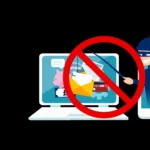A sales promotion is a promotional marketing tactic that offers a short-term incentive to persuade customers to make a purchase or take a specific action.
The purpose of a sales promotion is usually to boost sales and generate buzz about a product or service. Sales promotions are typically used for a limited time period to create a sense of urgency and encourage consumers to act quickly. They can be targeted to specific consumer segments or used to promote a new product or service. Sales promotions are often used in conjunction with other marketing activities, such as advertising and public relations, to create a cohesive marketing strategy.
Sales promotions can take many forms and fall into one of three key categories:

Chance to Win
Prize draw, instant win, click to win, gamification such as ‘spin to win’ or scratchcard, collect to win.

Guaranteed Get
Money off (such as an immediate discount or coupon), money back (such as try me free or money back guarantee), added value reward with purchase or collector.

Guaranteed Give
Charity donation with purchase
Sales promotions are used across a wide range of product sectors, including both consumer goods and services. Some of the most common product sectors that use sales promotions include:
Retail – Sales promotions are frequently used in retail to drive traffic to stores and increase sales. Retailers often offer coupons, points based loyalty programmes and other promotions to encourage customers to make a purchase.
Fast food and restaurants – Fast food chains and restaurants often offer meal deals, discount coupons, and loyalty programs to encourage customers to visit their establishments more frequently.
Consumer goods – Sales promotions are used by companies selling consumer goods, such as electronics, clothing, cosmetics, and household items. These promotions can include coupons, click-to-wins, and instant wins.
Travel and tourism – Hotels, airlines, and other travel-related businesses often use sales promotions to encourage customers to book a trip or stay with them. This can include package deals, loyalty programs, and special discounts for certain groups.
Health & beauty – They may offer coupons or percentage-off deals on certain products or product lines to drive purchase. They may also offer free samples or gifts with purchase to encourage customers to try new products. Additionally, they may offer loyalty programs that reward customers for repeat purchases or offer bundling deals that encourage customers to purchase multiple products at once.
Media networks – Use sales promotions to attract new consumers and encourage loyalty. For example, they may offer a chance to win prizes or offer a reward for signing up They may also offer discounts or free trials to attract new customers.
Developing a successful sales promotion involves several stages. Here are the typical stages involved in creating a sales promotion:
- Establish objectives – The first step in developing a sales promotion is to establish goals. This involves determining what you want to achieve with your promotion, such as increasing sales, attracting new customers, or building brand awareness.
- Identify the target audience – Once you have established your goals, you need to identify your target audience. This involves understanding who your ideal customer is and what motivates them to make a purchase.
- Determine the promotion type – You need to determine which type of promotion will be most effective for your goals and target audience.
- Set the promotion budget – You need to determine how much money you are willing to spend on your sales promotion. This will help you decide which promotion type and tactics are feasible for your budget.
- Develop the promotion strategy – Once you have determined the promotion type and budget, you need to develop a strategy for executing the promotion. This includes deciding on the timing, duration, and distribution channels for your promotion.
- Implement and execute the promotion – With your strategy in place, it’s time to implement and execute the promotion. This involves creating all marketing materials and distributing them through the appropriate channels.
- Evaluate the results – After the promotion is complete, you need to evaluate the results to determine if it was successful in achieving your objectives. This involves analysing sales data, customer feedback, and other metrics to determine the promotion’s ROI and identify areas for improvement in future promotions.
Sales promotions can be a worthwhile marketing strategy for businesses, but their effectiveness depends on the specific objectives and circumstances of the promotion. Some potential benefits of sales promotions include increased sales, brand awareness, customer loyalty, and a competitive advantage. Businesses should carefully plan and execute sales promotions to ensure they align with their overall marketing strategy and achieve the desired results. By doing so, sales promotions can be a valuable tool for growth.








